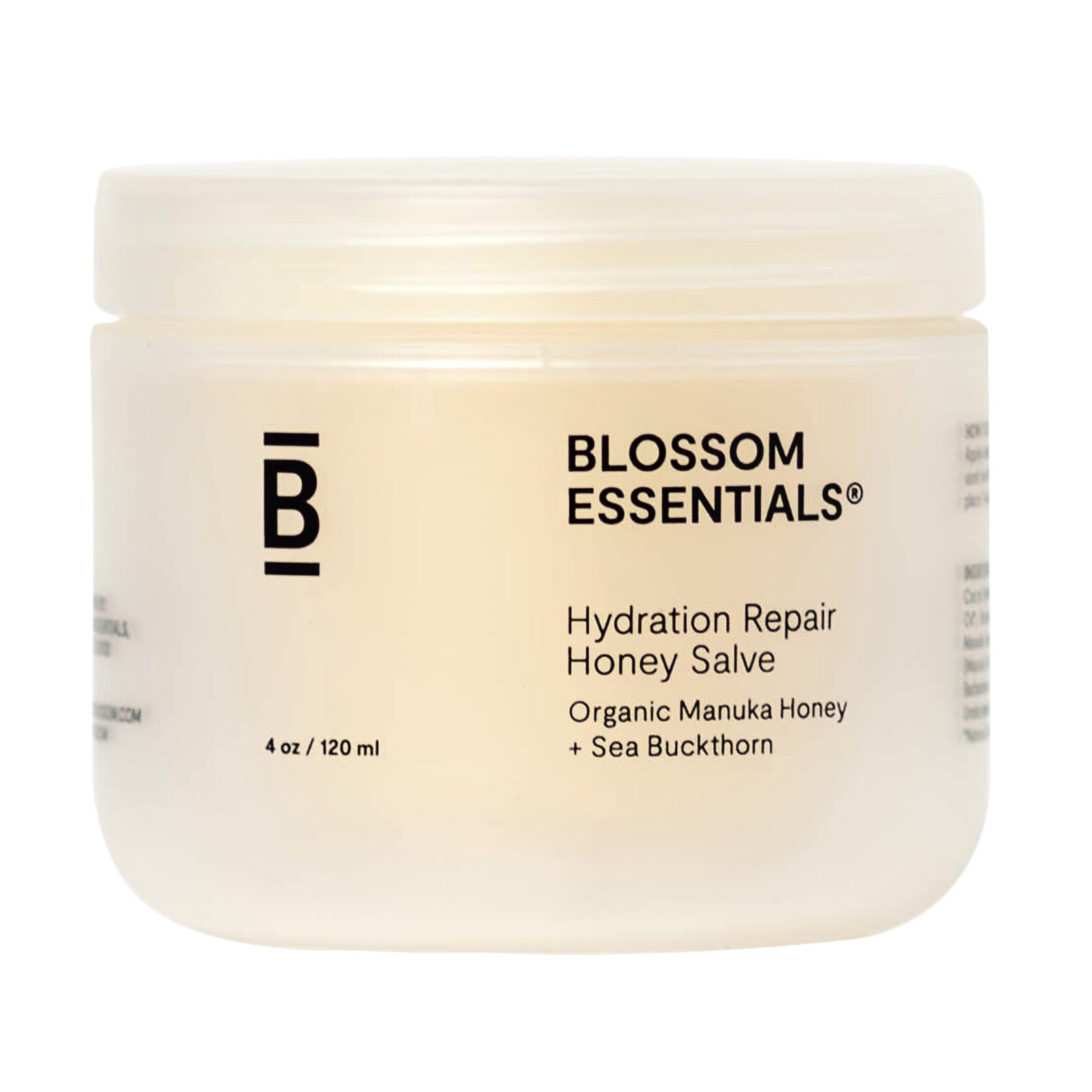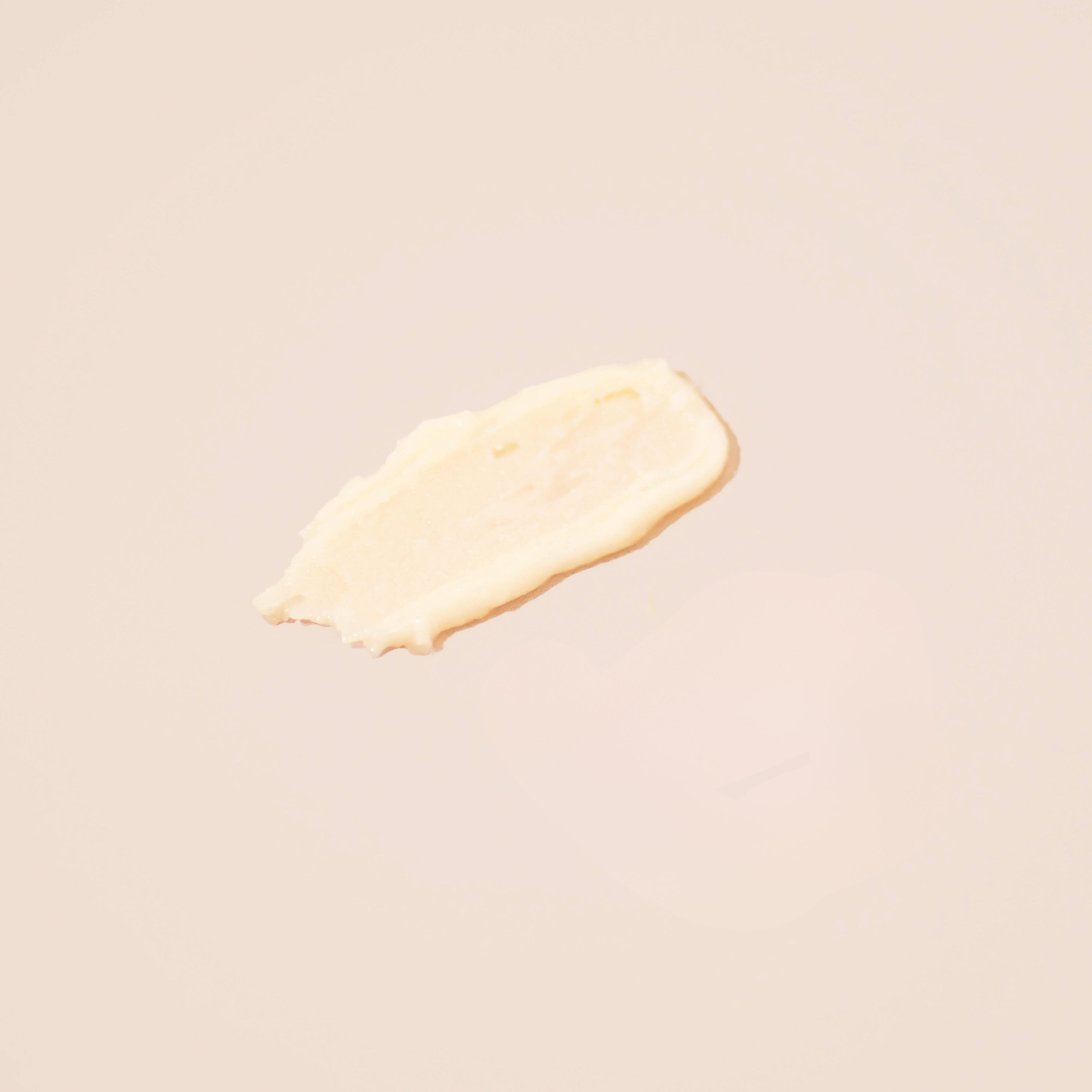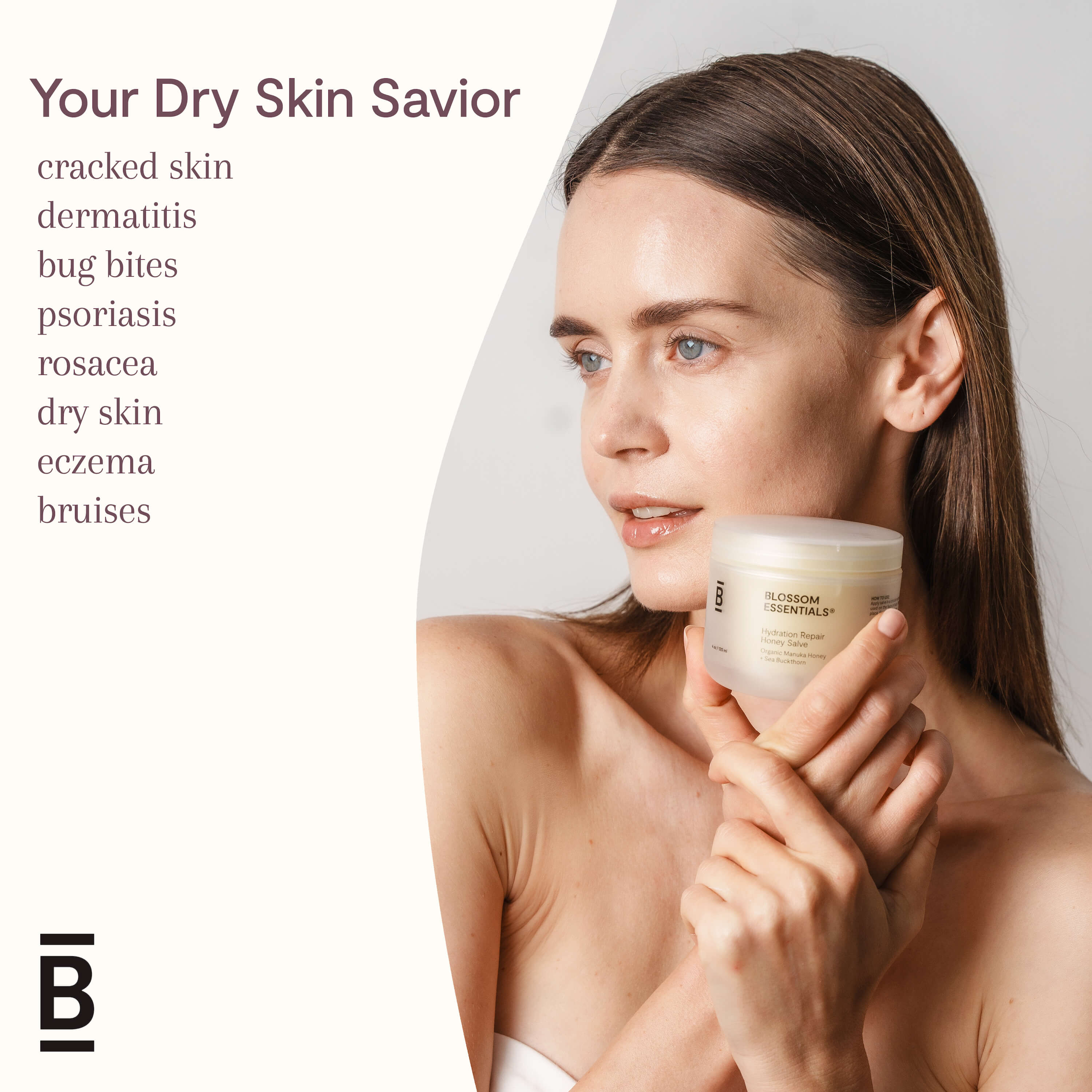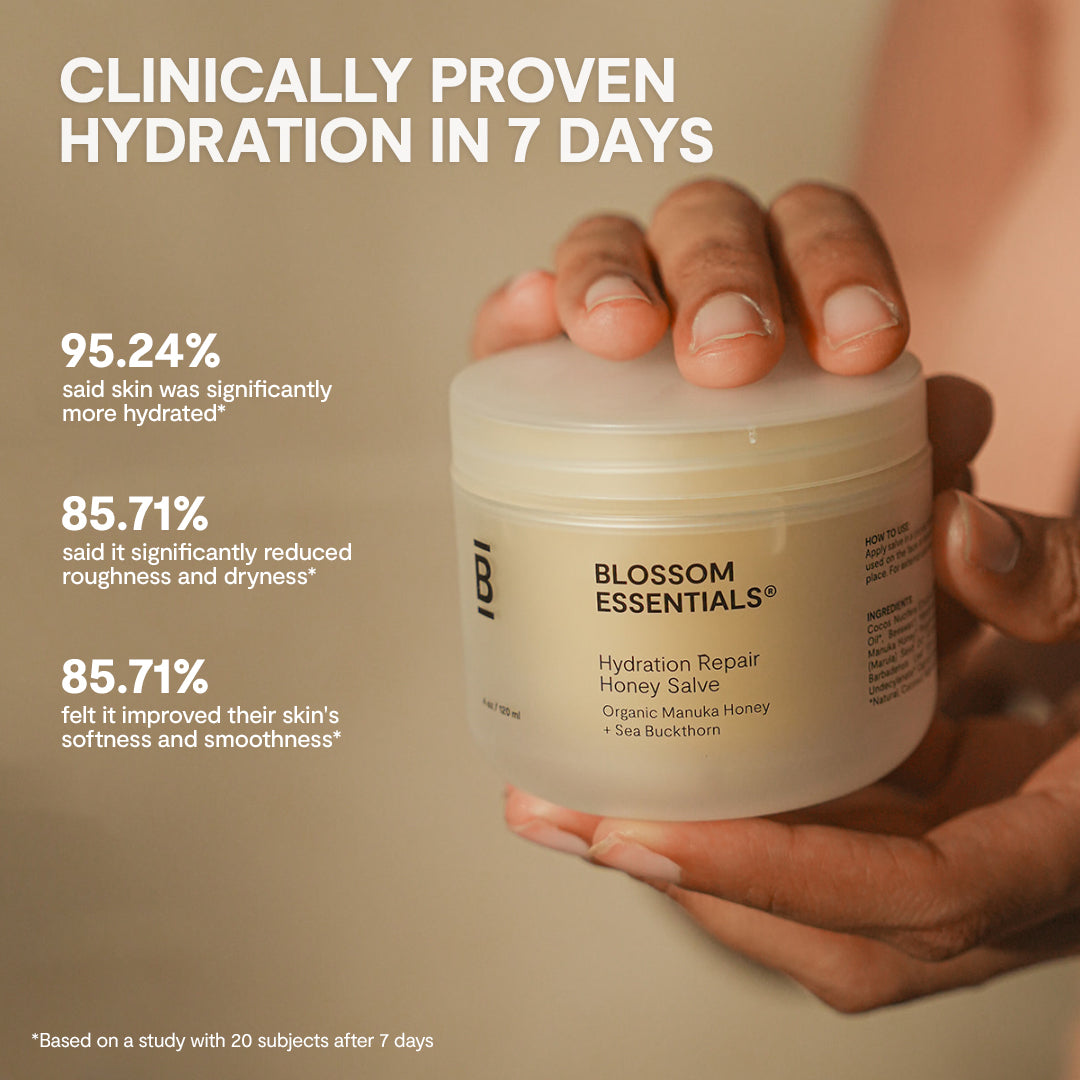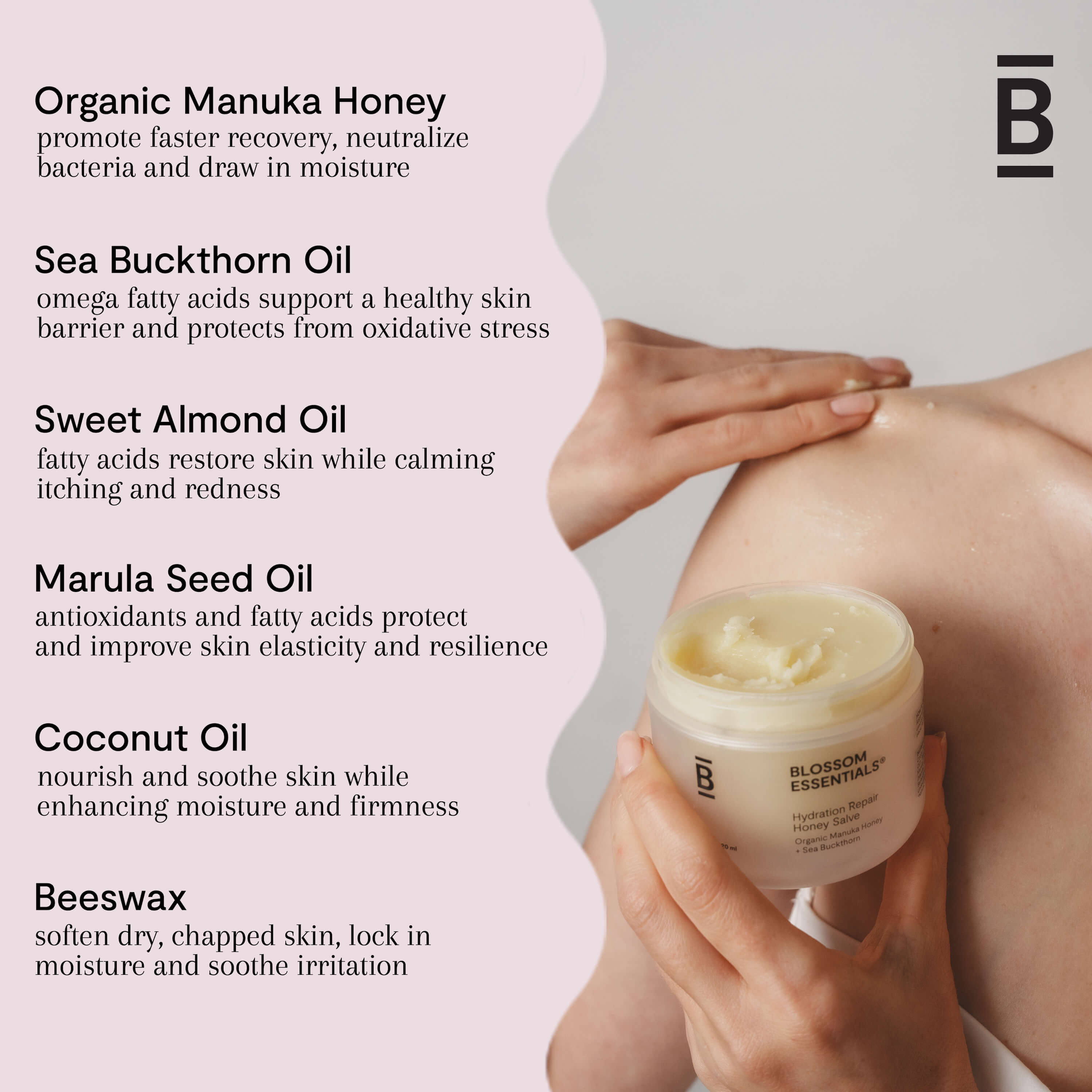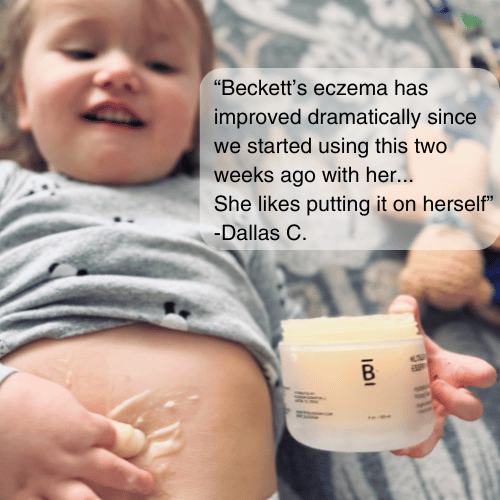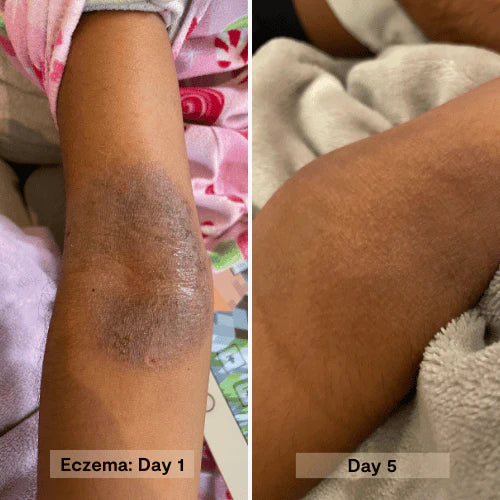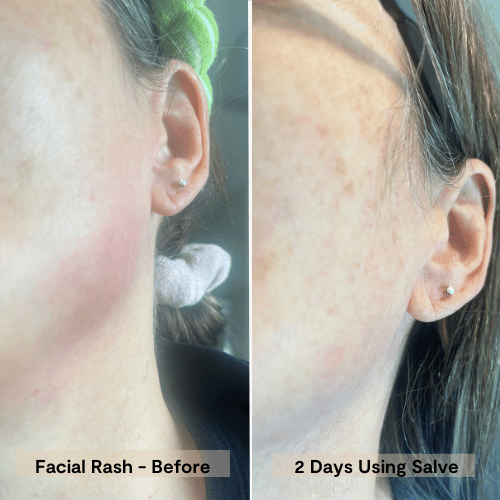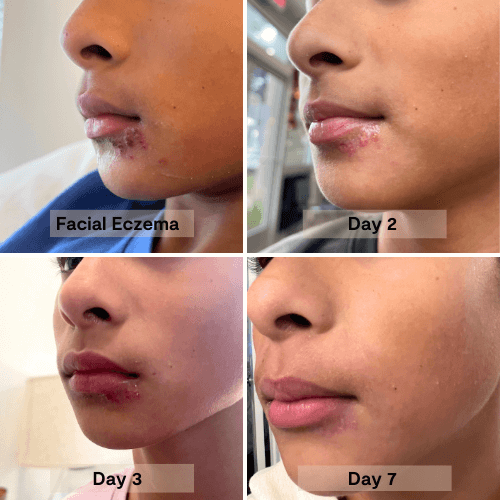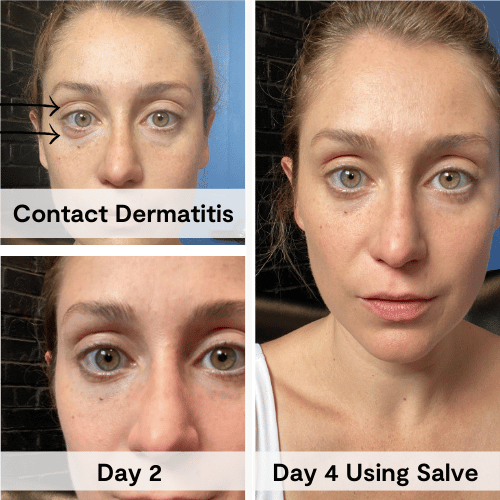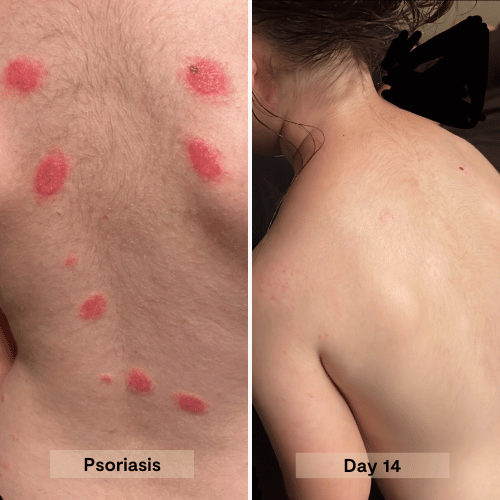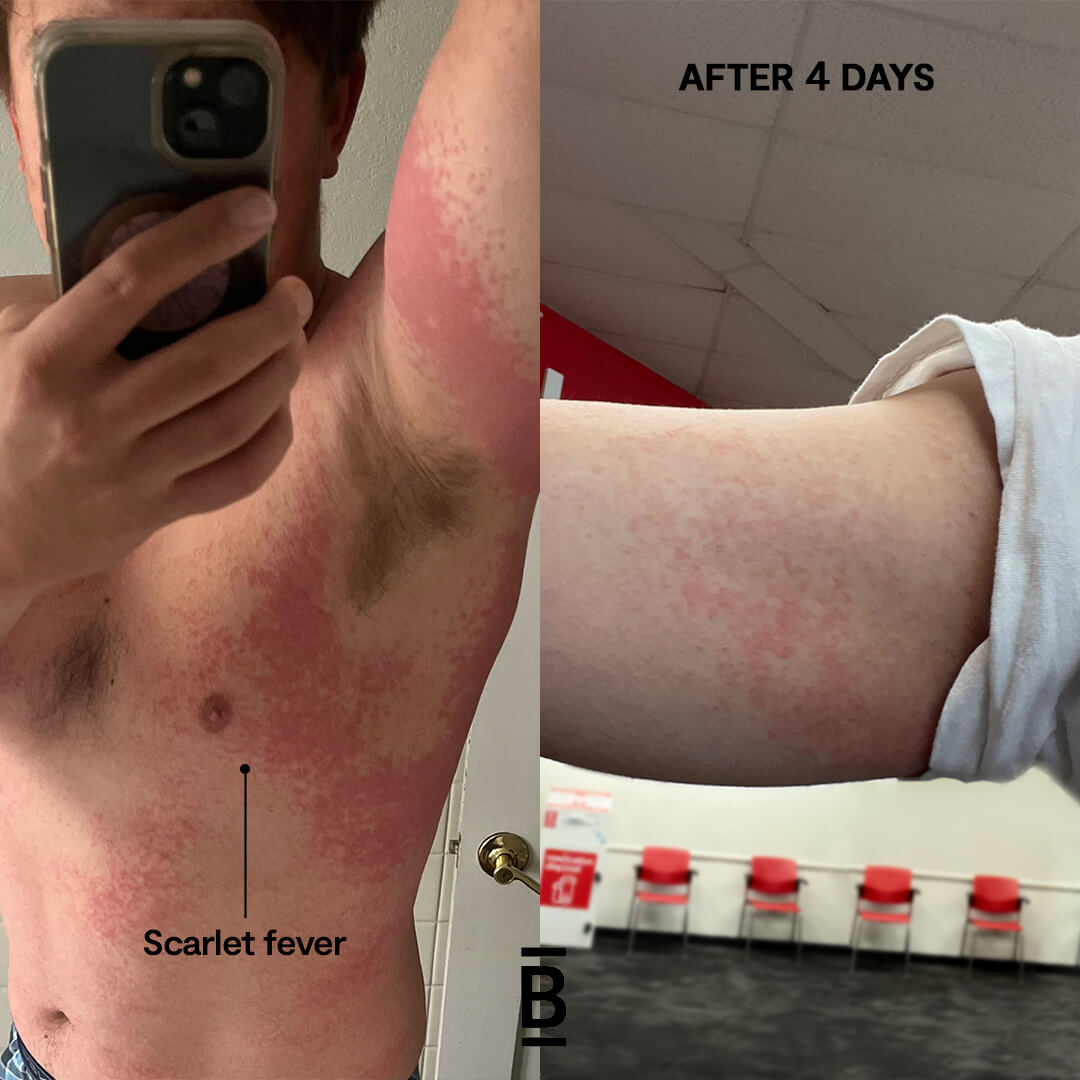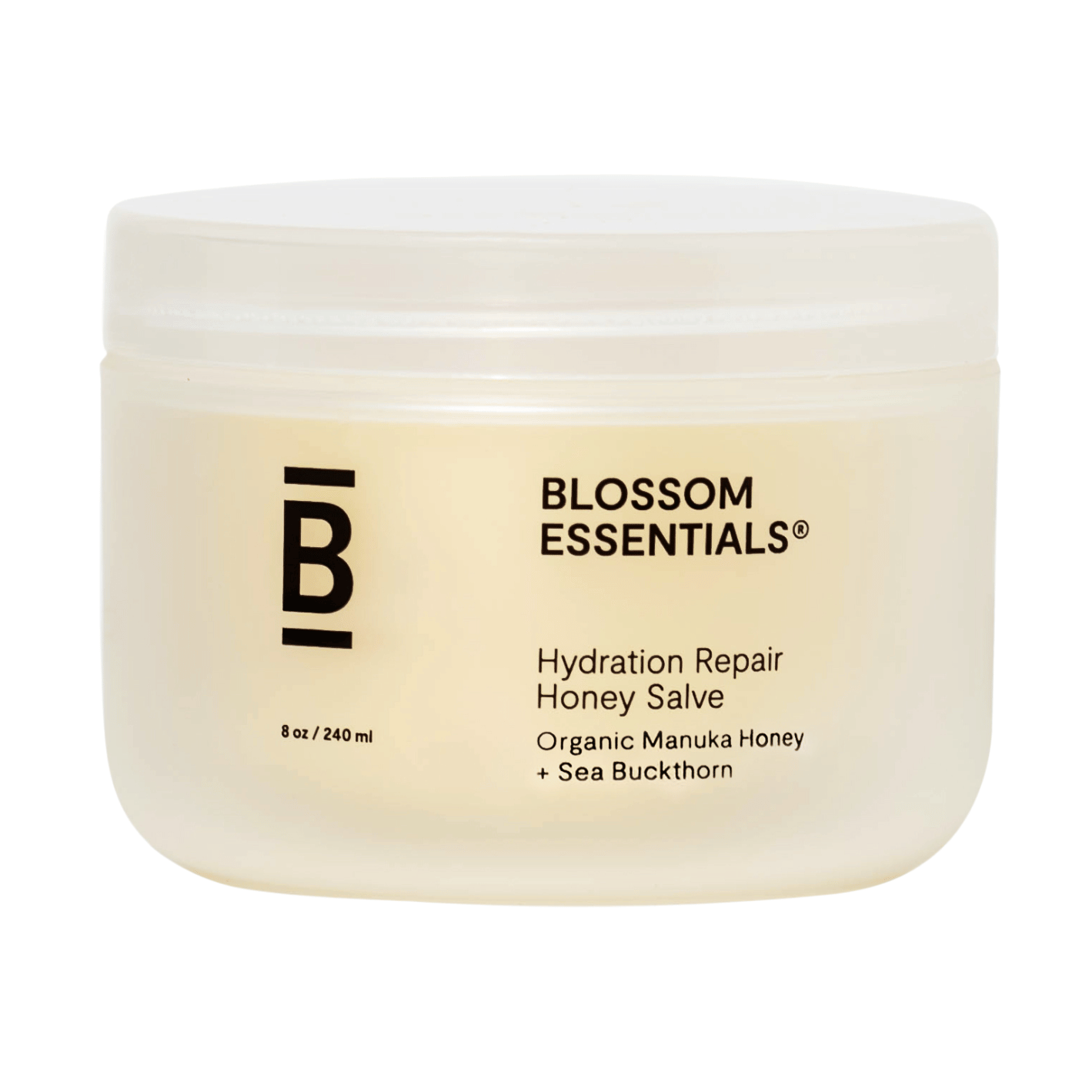A potent blend of organic Manuka honey, nourishing oils, and natural moisturizers penetrates deeply to intensely hydrate, relieve dryness, and repair the skin barrier. This salve quickly soothes damaged, itchy skin, leaving it rejuvenated, healthy, and wonderfully soft.
Navigating Common Skin Concerns
SOOTHING CONTACT DERMATITIS
We’ve all been there—that mysterious, itchy rash that appears after trying a new laundry detergent or wearing that cute bracelet you found online. One day your skin is happy, the next it’s staging a full-blown protest. That’s contact dermatitis, and here’s everything you need to know about it!
WHAT IS CONTACT DERMATITIS
Contact dermatitis is essentially your skin’s way of saying, “I don’t like that!” It’s an inflammatory skin condition that occurs when your skin comes into contact with something that either irritates it or triggers an allergic reaction. It’s basically your skin’s defense mechanism going into overdrive, and it affects millions of people worldwide, with studies suggesting that about 20% of people will experience some form of contact dermatitis in their lifetime. That’s right—one in five of us will deal with this skin rebellion at some point!
There are two main types of contact dermatitis that you should know about: Irritant Contact Dermatitis - This is the most common type, accounting for about 80% of all cases. It occurs when something damages the outer layer of skin faster than the skin can repair itself. No immune system involvement here—just direct irritation; and Allergic Contact Dermatitis - This less common but often more severe form involves your immune system overreacting to a substance that most people won’t react to. Your body essentially treats the substance (allergen) as an invader and launches an inflammatory response.
The history of diagnosing contact dermatitis goes back centuries, with ancient texts describing rashes that appeared after contact with certain plants or metals. However, it wasn’t until the 20th century that patch testing—a method to identify specific allergens—was developed, revolutionizing how we diagnose and treat allergic contact dermatitis.

CONTACT DERMATITIS CAUSES AND SYMPTOMS
Contact dermatitis has two main troublemakers: irritants and allergens. Irritant contact dermatitis happens when harsh substances damage your skin's protective barrier—think soaps, cleaning products, or even too much water exposure. Allergic contact dermatitis, on the other hand, is your immune system throwing a tantrum when it encounters triggers like nickel in jewelry, fragrances in perfumes, preservatives in skincare, or plants like poison ivy. While irritant reactions typically show up immediately, allergic reactions often play hide-and-seek, appearing 24-72 hours after exposure, making that detective work to identify the culprit all the more challenging.
The symptoms are your skin's way of waving a red flag. Look for redness, swelling, and that maddening itch that's almost impossible to ignore. You might also notice dry, cracked skin, painful bumps or fluid-filled blisters, and a warm sensation in the affected area. The telltale sign of contact dermatitis is that these symptoms appear exactly where the irritant or allergen touched your skin—so that mysterious rash forming a perfect bracelet-shaped pattern around your wrist? That cute new accessory might be the culprit! Remember, your reaction's severity can range from mild irritation to an angry, blistering outbreak depending on your sensitivity and exposure time.

POTENTIAL SOLUTIONS FOR CONTACT DERMATITIS
We know you’re probably thinking, “Enough about what causes it—how do I make it stop?” We hear you! Let’s dive into the solutions, from medical treatments to gentler, natural approaches. As always, we don’t recommend self-medicating and urge you to see a certified dermatologist before taking any action involving your skin.
1. PRESCRIPTION MEDICATIONS
When contact dermatitis is severe or doesn’t respond to over-the-counter treatments, it’s time to see a dermatologist. They might recommend:
- Topical corticosteroids: These anti-inflammatory medications come in various strengths and can significantly reduce inflammation and itching. For severe cases, your doctor might prescribe a high-potency version for short-term use.
- Topical calcineurin inhibitors: Medications like tacrolimus (Protopic) or pimecrolimus (Elidel) can help manage the immune response without the side effects of steroids. These are particularly useful for delicate areas like the face.
- Oral corticosteroids In extreme cases, a short course of oral steroids might be prescribed to get severe inflammation under control.
- Antihistamines: While these don’t treat the dermatitis directly, they can help control the itching and improve sleep when discomfort keeps you up at night.
2. OVER-THE-COUNTER PRODUCTS
For milder cases, several over-the-counter options can provide significant relief:
- Hydrocortisone creams (0.5-1%): These mild steroids can reduce inflammation and itching. They’re generally safe for short-term use, but avoid using them on the face unless directed by a doctor.
- Barrier repair moisturizers: Products containing barrier-repairing ingredients like our Blossom Hydration Repair Honey Salve, help restore the skin’s natural protective barrier, reducing irritation and preventing future flare-ups.
- Anti-itch products:Lotions or creams containing calamine, menthol, or pramoxine can temporarily relieve the maddening itch of contact dermatitis.
- Cool compresses: Sometimes the simplest solutions are the most effective! A cool, damp cloth applied to irritated skin can reduce inflammation and provide immediate comfort.
3. NATURAL REMEDIES
If you prefer a more natural approach, or want to complement medical treatments, consider these soothing options:
- Colloidal oatmeal baths:Oatmeal has anti-inflammatory properties that can calm irritated skin. Add colloidal oatmeal to a lukewarm bath and soak for 15-20 minutes.
- Aloe vera: This plant contains compounds that reduce inflammation and promote healing. Our Total Moisture Body Wash provides aloe-based cooling relief for the whole body without added irritants.
- Coconut oil: With its antimicrobial and moisturizing properties, coconut oil, which can be found in the Hydration Repair Honey Salve, can help soothe and protect damaged skin.
- Calendua: This flower has been used for centuries to calm irritated skin. Look for creams or ointments containing calendula extract, or make a cool compress with calendula tea.
- Honey:Raw honey, especially Manuka honey, has antimicrobial and healing properties. Apply a thin layer to affected areas (but only if the skin isn’t broken).

YOUR CONTACT DERMATITIS BATTLE PLAN
When your skin is in full rebellion mode, your regular skincare routine might need a temporary overhaul. That tight, itchy feeling after cleansing? The stinging sensation when applying your favorite serum? These are your skin's distress signals, begging for a gentler approach.
Think of this period as skin rehab—a time to strip back to the basics and focus on repair, not performance. The goal isn't anti-aging or brightening right now; it's simply to restore comfort and rebuild your skin's damaged barrier. Much like you wouldn't run a marathon with a sprained ankle, your irritated skin needs rest and recovery before returning to your regular routine.
Here's a gentle, effective routine to nurse your skin back to health:
Morning
- 1. Cleanse gently: Splash some warm water on your face or use a very gentle cleanser that won't strip skin.
- 2. Soothe and calm: Apply our Hydration Oil, which contains golden jojoba (a great skin conditioner) to reduce redness and irritation.
- 3. Moisturize and protect: Lock in hydration with your favorite moisturizer, ideally one that contains or boosts ceramides to rebuild your skin’s protective barrier.
- 4. Sun protection Even irritated skin needs sun protection. Apply a high-SPF formulation that doesn’t contain chemical filters that might further irritate sensitive skin.
Evening
- 1. Gentle cleansing: Skip the harsh foaming cleansers and opt for our Hydration Boost Face Cleanser, which removes impurities without stripping your skin’s natural oils.
- 2. Contain: If you are using a specific medication or naturopathic product to soothe a current flare up, apply it according to their instructions.
- 2. Extra hydration: Our Hydration Recovery Face Cream provides intensive moisture and repair while you sleep, with ingredients like tremella mushroom and ceramides that strengthen the skin barrier.
As Needed
- Flare up rescue: When irritation strikes, apply a powerful SOS moisturizer such as our Hydration Repair Honey Salve for immediate relief.
Contact Dermatitis Mythbusting
When it comes to contact dermatitis, misinformation abounds. Let’s set the record straight on some common myths:
Nature isn’t always gentle! Many natural substances are common allergens or irritants, including essential oils, plant extracts, and even aloe vera for some people. Remember, poison ivy is 100% natural!
While allergic contact dermatitis typically remains, irritant contact dermatitis can improve as your skin builds tolerance. Additionally, some allergies can fade over time if you avoid the allergen completely.
You cannot catch contact dermatitis from someone else, even if their rash is oozing or blistering. It’s a reaction, not an infection.
Price has nothing to do with potential reactivity. In fact, luxury products often contain more fragrances and botanical ingredients, which are common allergens.
You absolutely can! Allergies can develop at any time, even to products you’ve used safely for decades. This is called sensitization, where repeated exposure eventually triggers an immune response.
While hydrocortisone works for many skin problems, it's not always the right first choice. For irritant reactions, simply removing the trigger and using gentle, barrier-repairing moisturizers is often enough. Jumping straight to medication can sometimes mask symptoms without addressing the cause, or even worsen certain conditions if there's an underlying infection

LIVING WITH CONTACT DERMATITIS
Managing contact dermatitis is about more than just controlling flare-ups—it’s about making lifestyle adjustments to prevent them in the first place. The most effective treatment is avoidance. Once you’ve identified what causes your reactions (either through observation or patch testing by a dermatologist), do your best to eliminate these substances from your life. Here are some practical tips for keeping your skin happy:
- Trigger Tracking: Keep a journal of flare-ups, noting potential triggers and symptoms. This detective work helps identify patterns and culprits so you can avoid specific irritants or allergens in the future.
- Label Literacy: Become an expert at reading product ingredients. Learn the scientific names of your known triggers and scan everything from skincare to household cleaners before they touch your skin.
- Wardrobe Wisdom: Choose loose-fitting clothes made from natural fibers and wash new items before wearing. Cut out scratchy tags, skip the fabric softener, and consider hypoallergenic laundry detergent.
- Home Haven: Create a skin-friendly environment by using fragrance-free cleaning products, installing a shower filter, and maintaining optimal humidity. These small changes can prevent major flare-ups.
- Communication Is Key: Don't suffer in silence! Inform friends, family, and coworkers about your condition. When others understand your needs, they can help you avoid triggers in social settings.
- Stress Management: Practice relaxation techniques like deep breathing, meditation, or gentle yoga. Stress can worsen symptoms and trigger flare-ups, creating a frustrating cycle that proper self-care can help break.

Frequently Asked Questions
Without treatment, contact dermatitis usually lasts 2-4 weeks. With appropriate treatment and allergen/irritant avoidance, symptoms can improve significantly within days to a week.
Contact dermatitis specifically refers to reactions from direct skin contact. However, some food allergies can cause skin reactions that might look similar. This is typically called urticaria (hives) rather than contact dermatitis.
Stress itself doesn’t cause contact dermatitis, but it can lower your skin’s tolerance to irritants and might worsen symptoms during flare-ups.
No! Popping blisters increases the risk of infection and can slow healing. Let them heal naturally, and keep the area clean and protected.
Unfortunately, the opposite is more common. Repeated exposure to allergens typically increases sensitivity rather than building immunity.
Petroleum jelly can be used for protecting irritated skin. It’s generally non-allergenic, though some people might react to certain brands with added fragrances or other ingredients.
Patch testing involves applying potential allergens to your back using special patches. It’s not painful, though you might experience itching if you react to one of the tested substances.
Oh yes, those pregnancy hormones can absolutely shake things up! Many women experience changes in their skin's sensitivity during pregnancy, sometimes developing new reactions to products they've used for years.



